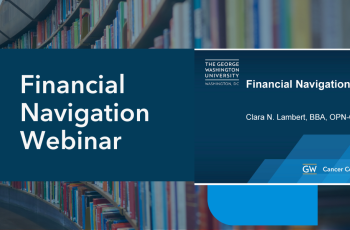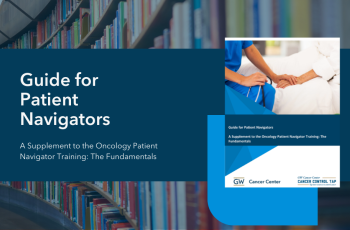This work was supported by Cooperative Agreement #NU58DP007539-01 from the Centers for Disease Control and Prevention (CDC).
Early Detection and Treatment
Watch an archived conversation presented by EBONY Magazine, discussing increasing cancer screening rates and access to care in the Black community.
This page shows colorectal cancer screening test use in U.S. states, the District of Columbia, Guam, and Puerto Rico by race and ethnicity, insurance status, sex, and age group (50 to 64 years and 65 to 75 years). It also shows the percentage of the age-eligible population screened over time.
This "cheat sheet" lists the different types of cancer screenings that are available to men.
GW Cancer Center hosted a Financial Navigation Webinar with Clara N. Lambert on financial toxicity and its impact on patient wellness, financial navigation, and resources to meet patient financial challenges.
In 2015, The GW Cancer Center (formerly the GW Cancer Institute) created the first consensus-based competencies for oncology patient navigators without a clinical license, which was accompanied by the Oncology Patient Navigator Training: The Fundamentals and an accompanying Guide. While most of the…
In 2015, The GW Cancer Center (formerly the GW Cancer Institute) created the first consensus-based competencies for oncology patient navigators without a clinical license, which was accompanied by the Oncology Patient Navigator Training: The Fundamentals and an accompanying Guide. While most of the…
The purpose of the ASTHO Breast Cancer Online Toolkit is to provide resources on identifying, measuring, and addressing breast cancer disparities, and to detail lessons learned from ASTHO’s Breast Cancer Learning Community.
Learn four things you can do to support reaching colorectal cancer screening rates of 80% and higher in LGBT communities.
This webpage contains materials for press events and communications about 80% in Every Community.
The CRC Clinician’s Guide and slide set is a practical guide for primary care clinicians containing evidenced-based tools, sample templates and strategies that can help practices improve their screening performance.


